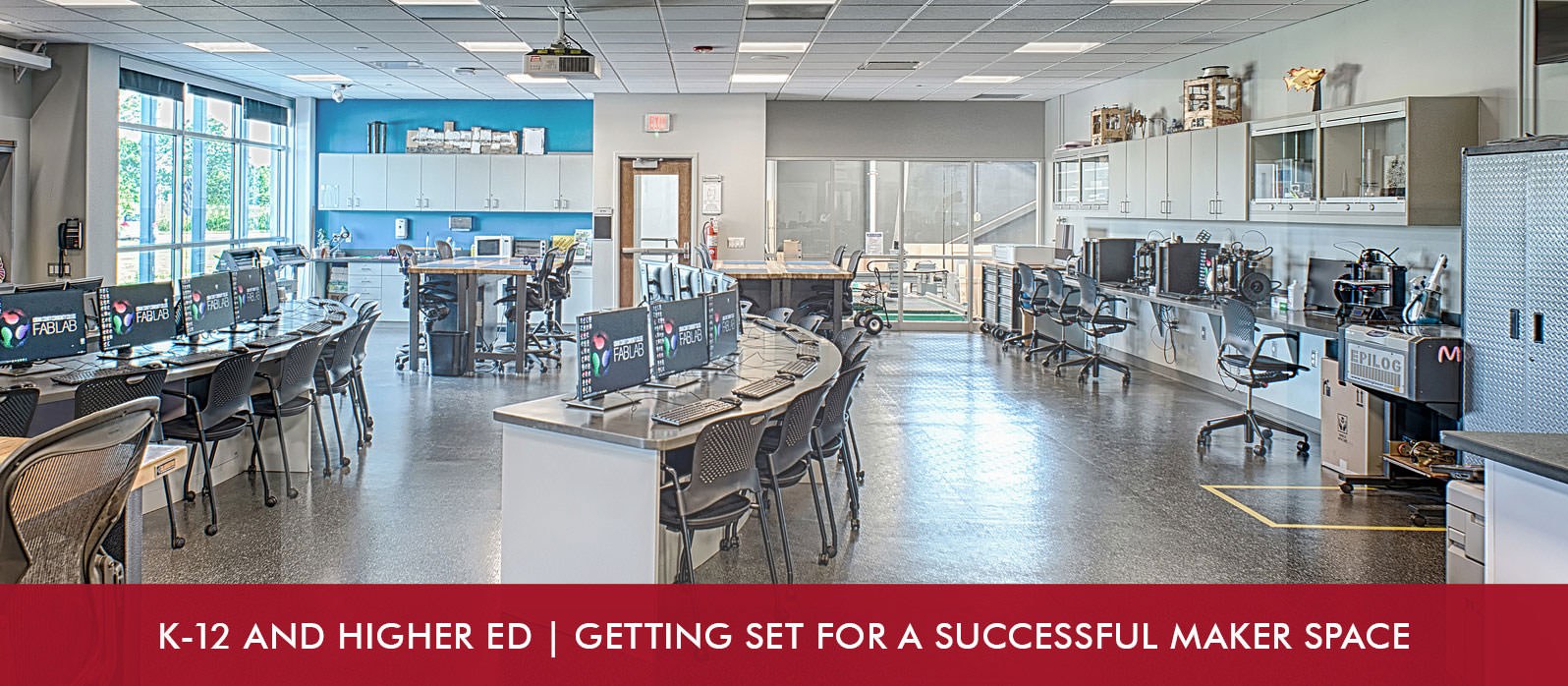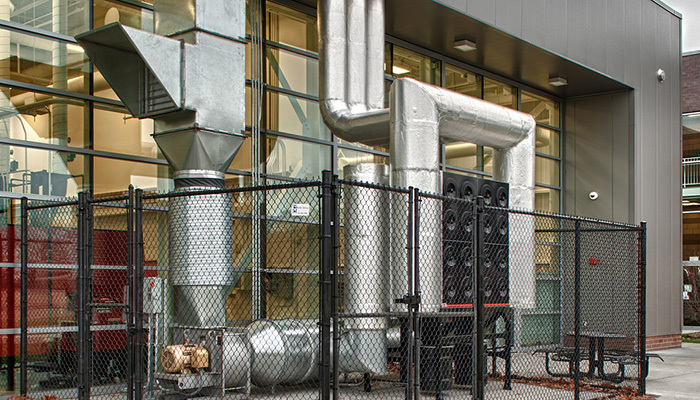Planning a Maker Space? Don’t Forget These 3 Support Systems
By Evan Hammersmith and Matt Priebe | Jun 11, 2019

When I (Evan) was a senior in college, I joined the Formula SAE race team. I had no particular interest in race cars, but as an engineer, I was interested in mechanical things. I volunteered to design the muffler, because I thought it would be the least consequential part of the car and wouldn’t require a lifelong passion for auto racing.
As it turns out, the muffler is a really important component of the car. At the competition, the racecar must pass a sound test before it even has an opportunity to see the track. If the car is too loud, your team will be spectators for the four-day event.
Being a part of the race team gave me access to the university’s machine shop. I had the opportunity to learn and use a metal cutting lathe, milling machine, band saw, slip roll, TIG welder, and other cool machines that most people don’t have in their garage. As a student, I became accustomed to learning theory and performing calculations, but rarely to taking those calculations into a shop and creating something with my hands.
With today’s maker spaces, students have a similar opportunity: to engage in something they wouldn’t otherwise be interested in. The projects students work on let them see how they can take their knowledge and make something useful with it.
Over the past five years, we’ve seen a sharp increase in the number of requests for maker spaces in K-12 schools and colleges. They incorporate machines like 3D printers, laser etchers, vinyl cutters, and CNC wood cutting mills. Some maker spaces are fairly industrial in nature, others less so.
Often, these maker spaces are retrofitted into existing school buildings. But because many machines have special operating requirements, a retrofit isn’t always as simple as reorganizing a classroom, plugging in the new machines, and getting started.
If you’re a grade school or higher education leader who’s planning a maker space, here are three behind-the-scenes topics you’ll want to discuss with your design team.
1) Flexible Power Options

Your design team will want to know how you plan to use the maker space. What kinds of machines are you planning on having? Different machines have different power requirements. Most will use standard 120V power, but larger equipment may require 208V.
Additionally, what might you want in the future, even if you don’t have it or need it today? Your program needs may change before you’re willing to renovate the entire space.
This information will help the design team incorporate the right amount of electrical system flexibility into your space. For example, we often bring a dedicated electrical panel to the room. This helps owners when adding or changing equipment. Rather than bringing in additional power from outside the room, you can connect directly to the panel.
2) Acoustics

The machines, air compressors, and exhaust systems in maker spaces can be noisy. If you’re retrofitting a maker space into academic classroom areas, there might be surrounding classrooms you don’t want to disturb.
Your design team can walk you through different options for managing acoustics. Outdoor, on grade dust collection and filtration, for example, is one way to remove noise from the building. Nearby mechanical, custodial, or storage rooms can also be good spaces for noisy equipment. Depending on the building, the rooftop may also be an appropriate location.
3) Special Exhaust and Dust Collection

Machines such as laser etchers and CNC wood cutting mills require the kind of special exhaust and dust collection usually only seen in wood shops and vocational labs. Soldering activities or work with certain adhesives may call for general exhaust or exhaust hoods.
As you talk with your design team about the equipment and activities you’re planning for, they can recommend the appropriate supporting systems to keep students and the building safe.
Compared to the exciting machines in a maker space, topics like power, acoustics, and exhaust might seem pretty dull. Working through them up front, though, will help you shape a space for students to thrive.